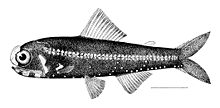
Symbolophorus is a genus of lanternfishes. It feeds on various small forms of sea life, in particular fish. Some species in this genus are known to exhibit the Stylophthalmine trait in their larval form
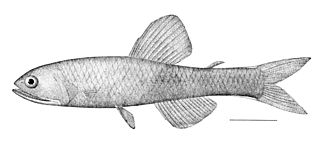
Lampanyctus is a genus of lanternfishes.

Myctophum is a genus of lanternfishes, some species of which, such as M. punctatum, are noted for having the Stylophthalmine trait in their larval form.

Benthosema is a genus of lanternfishes.
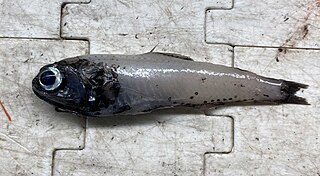
Bolinichthys is a genus of lanternfishes.
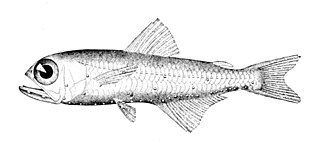
Hygophum is a genus of lanternfishes.
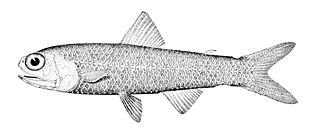
Lampadena is a genus of lanternfishes.
Nannobrachium is a genus of lanternfishes.
Scopelopsis multipunctatus, the multispotted lanternfish, is a species of lanternfish. This species grows to a length of 9.5 cm.

Albert Eide Parr was an American marine biologist, zoologist and oceanographer. He was the director of the American Museum of Natural History from 1942 to 1959. Parrosaurus missouriensis, a species of plant-eating dinosaur, is named after him.

The headlight fish is a species of lanternfish in the family Myctophidae. It is also sometimes referred to as the headlight lanternfish, or even the lanternfish, though it is not the only species to be called this.

Cocco's lantern fish, also called Gemellar's lanternfish, is a species of lanternfish.

The spothead lantern fish, also called the bluntnose lanternfish, is a species of fish in the family Myctophidae (lanternfish).

The white-spotted lantern fish, also called Rafinesque's lanternfish, is a species of fish in the family Myctophidae.
Diaphus handi is a species of lanternfish found in the Philippines and the western-central Pacific Ocean.
Diaphus dehaveni is a species of lanternfish found in the Philippines and the western-central Pacific Ocean.
Diaphus nielseni is a species of lanternfish found in the Indo-Pacific Ocean.

Dasyscopelus is a genus of lanternfish, family Myctophidae.

